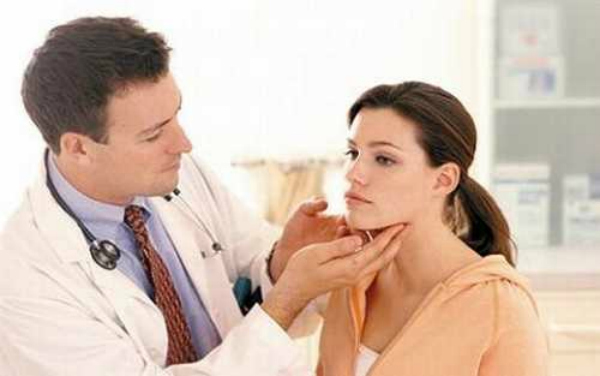
In simple anatomical definition, the thyroid gland is one of the largest, butterfly shaped, endocrine glands which is located in front of the neck, below the Adam’s apple. Thyroid glands or thyroid is responsible for regulating some of the important metabolisms in the body including those of the rate of energy utilization, protein synthesis, calcium metabolism, overall growth metabolism, and many more. The main hormones produced from this gland are Triiodothyronine (T3) and Thyroxine (T4). As these two hormones are important in regulating many physiological functions, the condition wherein there is less production of the hormones is referred to as Hypothyroidism.
Causes of hypothyroidism
1. Iodine deficiency
Hypothyroidism is caused due to very low iodine content in the diet or iodine deficiency. This cause affects about 5 to15 percent of the world population. Third world countries are found to be more affected.
2. Stress
Stress, including environmental or physiological, is also detected to be one of the causes of hypothyroidism. Stress leads to altered blood sugar levels and lowered immune functionality. In a chain of related reactions, stress retards the conversion of T3 to T4 resulting in immunity dysfunction of the metabolic processes.
3. Surgical removal of thyroid gland
Hypothyroidism may occur, in few cases, due to removal of a part or full of thyroid gland.
4. Hyperthyroidism treatment
There have been incidences reported wherein due to irradiation treatment therapies for hyperthyroidism, there is a strong impact on the overall functioning and general lessened production of thyroid hormones.
5. Drugs
As a result of certain strong medications, hypothyroidism may result, especially with usage of lithium based medicines.
6. Pituitary dysfunction
In this condition, due to inadequate working of the pituitary gland, the stimulation of thyroxine production is affected leading to Hypothyroidism.
7. Hashimoto’s disease
In this condition due to enlargement of the thyroid gland, there is decreased ability to produce the required amounts of thyroid hormones. This condition is autoimmunity related disease and is greatly influenced by heredity.
Hypothyroidism prone zone
It is most commonly seen that women above the age of 50 years are the ones to be affected more when compared with men of the same age. However, it is a daunting task to be able to diagnose the presence of this disease among the elderly as the symptoms are often confused with those of aging and also among the young population, although rare, as the symptoms are passed off as being related to hormonal fluctuations. Although women are more susceptible to this disease, the genetic factor also plays a major role in the inheritance of hypothyroidism.
Early signals
The most distinguished symptoms of hypothyroidism are as follows:
1. Abnormal and quick weight gain and inability to lose the extra pounds gained
2. Increased sensitivity to cold
3. Fatigue
4. General weakness
5. Unmanageable dry hair, followed with hair loss
6. Increased incidents of muscular cramps
7. Constipation
8. Memory loss
9. Irritability
10. Abnormal and irregular menstrual cycles
11. Depression
12. Paleness of the skin
13. Low heart rate (Bradycardia)
14. Thinned and brittle nails
15. Slow and slurred speech
Essential diagnosis
It is important to note the symptoms of hypothyroidism and opt for the diagnostic methods, as given below:
1. Physical examination of the thyroid gland revealing diminished gland size along with occurrence of symptoms like dry, dull hair, brittle nails, pale skin, swollen arms and legs due to water retention.
2. Enlarged heart observed through chest X-ray.
3. Low levels of T3 and T4 levels reported through laboratory tests, along with the revelation of anemic blood level, high levels of blood cholesterol, prolactin and liver enzymes and low sodium levels.
4. Antibody screening is also done to estimate the immunity status of the body.
Treatment
The objective of hypothyroidism treatment is the restoration of the thyroid hormones close to or to normal levels which ensure the proper metabolic functioning. In order to achieve this, the following treatment procedures are usually followed:
1. Levothyroxine is the most common drug that is prescribed to help raise the thyroid hormone levels in the body. This medicine is prescribed at varying degrees of dosage according to the age and complexity of the symptoms in the patient. It is suggested to take the medicine atleast an hour before meals so that any food component does not react with its action.
2. The hormone levels must be checked every alternate month to ensure the proper working of the prescribed medicines. Usually the medicines are required to be taken for life time.
3. Inclusion of iodine in the diet is another important treatment
4. It is important not to skip medications at any point of time without medical supervision.
Hypothyroidism is usually a curable disease with rare exceptions. All it requires is dedication and the will to overcome the situation with the support of medical aid. It is important not to get bogged down with all the side effects of the symptoms which might promote feelings of helplessness; but help is always at hand.




